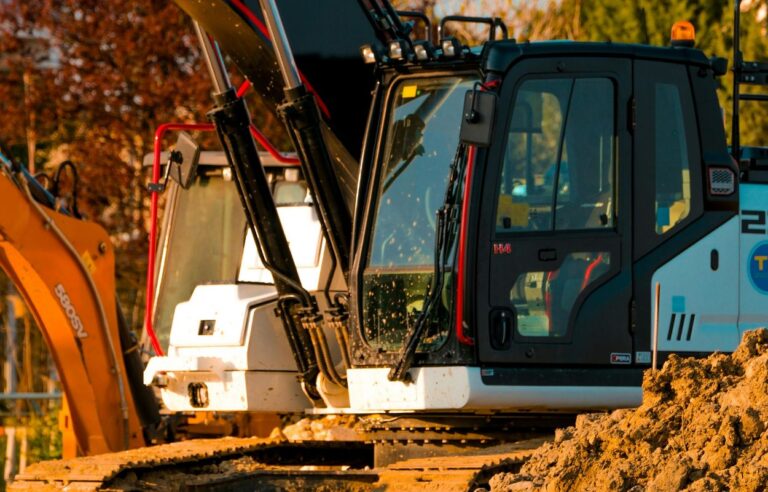If you’ve ever wondered what goes on behind the scenes of an asbestos abatement site, you might be surprised at how organized and carefully controlled the process is. One of the most crucial elements in keeping everyone safe is the asbestos transfer room.
It might not sound exciting, but these rooms play a huge role in protecting workers, preventing contamination, and making sure the job goes smoothly. Let’s take a closer look at what asbestos transfer rooms are and how they work.
WHAT IS AN ASBESTOS TRANSFER ROOM?
An asbestos transfer room is a specially designed space on an asbestos abatement site. Its main job is to act as a barrier between the contaminated area and the clean area. Imagine it as a sort of “airlock” where workers, tools, and materials pass through safely without spreading dangerous asbestos fibers.
These rooms are critical because asbestos fibers are tiny and can float in the air. If they escape the work area, they can cause serious health problems for anyone nearby. The transfer room helps make sure this doesn’t happen.
HOW ASBESTOS TRANSFER ROOMS PROTECT WORKERS
Safety is the top priority during asbestos abatement in Port Alberni. The transfer room helps in several ways. First, it provides a controlled space where workers can put on and take off their protective clothing. This prevents asbestos fibers from sticking to their clothes and shoes.
Second, the room usually includes decontamination equipment, such as showers and HEPA-filtered vacuums. These tools help remove asbestos particles from workers’ bodies and equipment before they exit the contaminated zone.
Finally, the room keeps a strict separation between clean and contaminated areas. This limits the risk of spreading asbestos throughout the building and protects both workers and the general public.
THE STRUCTURE OF A TYPICAL TRANSFER ROOM
Most asbestos transfer rooms have a few common design features. They are usually built with durable materials that can withstand constant cleaning. The rooms often have an antechamber or entry area where workers put on disposable protective clothing.
Inside, there may be sinks, showers, and changing areas. Many transfer rooms have negative air pressure systems. These systems ensure that air flows from the clean side to the contaminated side. That way, no asbestos fibers escape into the clean areas.
Some transfer rooms also include specialized storage for tools and materials. Workers can safely place contaminated equipment inside without risking exposure. Everything is designed to keep the abatement process safe and efficient.
THE ROLE OF AIR PRESSURE AND FILTRATION
Air control is a key part of any asbestos abatement project. Transfer rooms often use negative air pressure units to control the flow of air. Negative air pressure means that air moves inward, toward the contaminated area, instead of outward into clean spaces.
HEPA filters are another essential feature. These filters trap tiny asbestos fibers, preventing them from escaping into the environment. Together, negative air pressure and HEPA filtration create a clean, safe working environment.
HOW WORKERS USE TRANSFER ROOMS
Using a transfer room involves a series of careful steps. Workers usually enter the room from the clean side. They put on protective clothing, including coveralls, gloves, masks, and sometimes respirators.
Once they are fully suited, they pass through the transfer room into the contaminated area. During the abatement process, they handle asbestos materials safely, using proper techniques and tools.
After finishing their work, they return to the transfer room. Here, they remove and dispose of their protective gear in a controlled way. They might take a shower and clean all tools and equipment before leaving the room. This step ensures that asbestos fibers don’t leave the work zone.
WHY TRANSFER ROOMS ARE ESSENTIAL FOR ASBESTOS ABATEMENT IN PORT ALBERNI
Without transfer rooms, asbestos abatement would be much riskier. Fibers could spread to clean areas, endangering workers and anyone nearby. Properly designed transfer rooms make sure the abatement process stays contained and safe.
These rooms also help projects run smoothly. By providing an organized space for changing, cleaning, and storing tools, transfer rooms prevent delays and reduce confusion. Workers can focus on their tasks, knowing they are protected.
COMMON FEATURES AND EQUIPMENT
Most transfer rooms include:
- Protective clothing storage and disposal bins
- Sinks and showers for decontamination
- HEPA-filtered vacuums
- Negative air pressure units
- Controlled entry and exit points
- Storage racks for tools and materials
These features may vary depending on the size of the project or the specific site requirements. However, every transfer room is designed with safety and efficiency in mind.
TIPS FOR MAINTAINING A SAFE TRANSFER ROOM
Keeping the transfer room clean and organized is essential. Workers should regularly check that negative air units and HEPA filters are functioning properly. Contaminated waste must be disposed of safely according to local regulations.
Regular cleaning schedules and proper staff training ensure the room functions correctly. Even small lapses can lead to contamination, so vigilance is key.
THE HUMAN ELEMENT
While technology and equipment are important, human behavior plays a big role in safety. Workers must follow all procedures, wear protective gear correctly, and respect the boundaries between clean and contaminated areas.
Training sessions often emphasize how to enter and exit the transfer room safely, how to dispose of clothing and tools, and how to avoid cross-contamination. When everyone takes their responsibilities seriously, asbestos abatement becomes much safer and more efficient.
CONCLUSION
Asbestos transfer rooms may not grab headlines, but they are a vital part of any asbestos abatement project. They protect workers, prevent contamination, and make the process more organized and efficient. By controlling air flow, providing proper decontamination facilities, and separating clean and contaminated areas, these rooms help keep everyone safe.
If you’re considering asbestos abatement in Port Alberni, make sure the team uses properly designed transfer rooms. They are one of the most effective ways to manage risks and ensure a safe, successful project. Safe practices, careful design, and the right equipment make all the difference.


